- Home
- Jeffery Deaver
The Cutting Edge Page 4
The Cutting Edge Read online
Page 4
No, the unsub was after something else. What?
To find an answer Amelia Sachs did what she often was forced to do at scenes, as harrowing as the process might be: She mentally, emotionally, became the perp. In an instant she was no longer a cop, no longer a woman. She was the man who had created this carnage.
And asking herself—himself: Why do I need to hurt him?
Need is the word. I’m feeling an urgency. A desperation.
Why do I have to hurt him and make him talk?
A prickly sensation around her face again, around the base of her neck, above her spine. This wasn’t the heat from the stifling air, which she’d felt earlier. And it wasn’t the horror she was feeling at the Method Acting role she was playing. No, the symptoms were from the edginess coursing through his body.
Something’s not right. I need to fix it. What, what, what?
Go back in time, think, imagine, picture…
Just after noon, I’m entering the shop. Yes, entering the office behind the couple, William and Anna. These lovers are my entrée through security and they’re going to die because they’ve seen my face. I feel relief at this thought: their death. It’s comforting. No loose ends.
When they push through the door, I move in behind them.
I can’t control both of them with the knife. No, I’ll have that firearm out. But I’m reluctant to use it because of the noise.
Still, I will if I have to, and they know it.
William and Anna and Patel don’t move.
They settle.
I settle.
I’m in control.
Good, I’m feeling good now.
I hit Patel—with the weapon, probably. Incapacitate him. The couple gets tied up. They’re crying, both of them. Moving close to each other, to feel the other’s presence. Because they know what’s coming.
I’m not moved by this, not at all.
This thought took her back to herself and her breath grew fast, her teeth ground together, her gut tightened. She dug one gloved index fingernail against a gloved thumb. Felt the pain. Ignored it.
Back. Get back inside him.
And she did.
Now I’m crouching, grabbing the hair of the man and slicing his neck.
Then the woman’s.
I hear Patel’s cries. But I pay them no mind as I watch the couple thrash and bleed to death. One task done. That’s what I think. A task. Done. Good. Tick one thing off the list. That’s all the deaths are. A checkmark.
I turn to Patel. He’s down, he’s no threat. And he’s terrified. I ask him for the most valuable stones he’s got.
He tells me. He gives the combination to the safe and I get the Grace-Cabot diamonds. But—here’s the key. Important. Vital. I want something else, something he’s not giving up.
What?
Now, bending down, I’m cutting differently, cutting to hurt, cutting to let information spill from him, along with the blood. It’s satisfying. Again. Another cut. Face and ear and finger.
Then, finally, he tells me.
I relax. The knife finds his throat. Three fast slices.
It’s over.
What has Patel told me?
What has he given me?
What am I so desperate to find? What do I so need to find?
I have my treasures, five million worth of stones. Why not just leave?
Then she understood.
The one thing I need is to protect myself. I’m obsessed with my own preservation. That’s what I could torture someone for. To learn the identity of somebody who’s a threat to me. I spray-paint one security camera, I steal the hard drive of the camera I can’t paint, I kill two innocent witnesses solely because they’ve seen my face…
I need to make sure no other witnesses will say anything to the police.
There was the man who walked into the robbery, the man I shot, and who called 911 to report the attack. Would I torture Patel to get his name? He didn’t see much. Just me in a ski mask, he’d reported. And he probably walked in after Patel was dead. Not much of a threat there. No, more likely I’d have tortured the diamond cutter to find the name of somebody else who might have seen my actual face.
Yes, that could be reason enough to torture.
Stepping out of character, Sachs lowered her head and slumped against the wall, breathing hard and wiping sweat from her eyes and temples. When she’d recovered from the dark channeling, she returned to the hallway and browsed through the evidence. She located Patel’s calendar and looked through it. The entries indicated that “S” would be here at 11 a.m., “W and A”—William and Anna, the murdered couple—at 11:45. “VL” was written in the margin on Saturday, not next to any particular time. VL was likely the answer to Question Number Three—who had called 911. A partial answer only, though, as initials were not an identification.
She speculated: The unsub could have been in or near the building when S arrived or left, and he could have been worried that S had seen his face. He needed Patel to tell him S’s name to find and eliminate him. The same with VL.
She thumbed through other pages of the day planner. Along with notations of hundreds of meetings and apparent assignments over the past month, there were two references to appointments with S in the past ten days. VL appeared regularly, three or four times a week. So VL was possibly an employee or associate; this meant he would know the door code and so might walk into the robbery in progress, surprising the robber, who shot him.
Who are you, both? S? And VL?
And where are you?
Then a thought occurred.
If he was the one who’d walked in on the robbery, gotten shot and fled…how had he escaped?
The unsub had shot him. But then he would have chased after the man immediately. Given five or six seconds to step around the bodies and avoid slipping in the blood, the killer still would have had a good chance at catching up with the fleeing witness.
Sachs studied the hall once more. She’d assumed the killer had entered via the elevator, particularly because he’d spray-painted the camera just outside it. Or perhaps he’d taken the stairs, next to the elevator.
But there was another door on this floor, next to Patel’s office, a fire exit. Sachs had noticed it but had noted too the sign that warned: Fire Exit. Alarm Will Sound When Opened.
Since no one in the building had reported an alarm and the door was closed, she assumed the perp hadn’t used it. And he wouldn’t have thought that VL had escaped that way.
The actual site of the murder, or robbery, is the primary crime scene but there are others, of course. The perp has to get there and then get away and each of the secondary scenes can be a source of delightfully incriminating evidence. In fact, those scenes often yield more helpful clues than the primary scene since the perps might be more cavalier on the way to a job and more careless fleeing afterward.
She walked to the door. Pulling her weapon, Sachs pushed it open. No alarm.
Entering the dim, musty stairwell, Sachs played her flashlight beam upward and then down to the landing below. She paused and listened. There were creaks and grinds, and the wind, this cold ugly March wind, moaned through ancient seams in the building. But she heard no sound of footsteps. Of weapons chambering rounds.
The evidence had not given any indication that the perp had remained behind but there was no evidence suggesting he hadn’t.
Crouching, she swept her Maglite beam once more into the darkness.
She continued slowly down the stairs and there, on the landing between the second and third floors, she found a small scattering of objects.
It was similar to what she’d found inside the doorway of Patel’s office, chips and grains and dust of dark gray stone. She’d thought it might be gravel tracked in by someone, though none of the victims’ shoes revealed similar traces. But apparently not. In addition were shreds of brown paper—the shade of a grocery or lunch bag. And, explaining a lot, there was a bullet. It was deformed and flattened, and on the mush
roomed nose were bits of the same gray rock. Several of the shards of stone were bloody, though the slug was not.
A logical scenario presented itself. The unsub breaks in, steals the Grace-Cabot stones, kills the engaged couple, then tortures Patel to get S’s name, thinking he might be a witness. He kills Patel. He’s about to leave when VL enters the office, using the door code. The killer’s surprised and shoots at him. The vic is carrying a bag containing stones to be carved and polished into jewelry. The bullet hits the stone and he’s wounded by some shards. He flees through the fire door, which the killer ignores, thinking he can’t have gone that way because of the alarm bar.
So there are two witnesses whom the perp is presumably aware of: S, whose name and address Patel might have given up under torture. And VL, who might have seen only the ski mask but may know something else the unsub does not want to come to light.
Whoever VL is, he’d be at risk too, of course. One concern might be that a stone splinter had lodged in or near a vital organ. He might be bleeding severely.
That risk might or might not be the case.
The other, though, was certain. Sachs assumed that the unsub had looked at Patel’s diary and knew that not only S but VL was a potential threat.
Of course, the unsub might flee the area with his spectacular diamond windfall.
But Sachs’s few moments of channeling him earlier suggested otherwise. She believed, she knew that he was staying put for the time being; a man who would so casually orchestrate a bloody crime scene like this was absolutely not the sort to leave witnesses alive.
Chapter 6
The Port Authority, of all things, brought him comfort.
The sprawling, scuffed complex at 42nd Street and Eighth Avenue was, in reality, a massive bus terminal, despite a name that suggested ocean liners from exotic locations were queuing to dock.
The place was a churning tub of harried suburban commuters, of travelers bound for, or journeying from, the region’s airports, of tourists. Here you’d also find energized young hopefuls from all over the world, carrying gym bags and backpacks stuffed with jeans, sweats, plush animals, condoms, sheet music, sketchbooks, good-luck theater programs and plenty of dreams sturdy, and dreams fragile.
Here too, hustlers, dealers, scam artists, chicken hawks—not particularly clever ones. But then you didn’t need to be a keen tactician when the herd you preyed upon was made up of naïve and enthusiastic kids from Wheaton, Illinois, or Grand Rapids. The Port Authority saw fewer of these sly players than in the past but that wasn’t due to a moral surge in looking out for our youth; terrorism had kept the police population on the Deuce high.
Vimal Lahori knew a lot about this—or speculated much upon it—because the Port Authority was a home away from home.
He would slip over here to have some fast food for lunch; it was a short walk from his job at Mr. Patel's, on 47th. To watch the people, their expressions, their gestures and emotions—to find inspiration he would take home with him and, in his workshop, try to render that vision into three dimensions.
He sat on a waiting area bench and enwrapped his throbbing torso with his arms. He squeezed hard. The pain subsided a bit but then returned. Spread, in fact, as if he’d broken a thin sack of acid and the discomfort now flowed to places where it hadn’t been. The worst was in his right side, where, at elbow level, he felt a large lump beneath the skin. As the killer had raised the gun, Vimal had instinctively turned away. Either the bullet or part of it or a fragment of stone had ripped through his clothes and lodged. He’d heard if you went to the emergency room and either told them you’d been shot or they deduced it the medical workers had to call the police.
And that, of course, would not work.
Reaching under his jacket and up under the Keep Weird sweatshirt, he probed with his left hand—the only one that could reach the site. He withdrew his fingers and saw blood. A lot of it.
Vimal closed his eyes momentarily. He was at a complete loss, paralyzed. Mr. Patel dead—the vision of his feet angling toward the dim ceiling of the shop wouldn’t go away. That couple too. William Sloane and his fiancée, Anna. And the man in the mask, walking into the doorway, eyes squinting in surprise to see him. Lifting the gun and the two sounds almost simultaneous: the explosion then the snap of the bullet striking the bag in his hand.
He’d stumbled back and then was sprinting flat-out through the fire door—the alarm hadn’t worked for years—and stumbling down the stairs. He’d been terrified the man would follow but no. He must have assumed Vimal had run for the stairwell in the front of the building. Or maybe he’d assumed the bullet would soon be fatal.
And now here was Vimal Lahori.
Finding comfort, to the extent comfort could be found.
His cap pulled low, hunkered down on the bench, Vimal gazed around him. Even now, not a workday, the place was crowded. The Port Authority terminal was near the Theater District. The rush for the Saturday matinees was over. The plays had started or were about to. But there were still a million things to see and do on the weekends, even on a cold March afternoon: the Disneyland of Times Square, movies, brunch, shopping. And his favorites: the Metropolitan and MoMA, the galleries south of 14th Street.
Hundreds streamed past.
Under other circumstances, he would be absorbing the energy. Under other circumstances, he would be gazing at the electronic departure signs and wondering about the destinations the buses might take him (Vimal had never been out of the metro area). Now, of course, he was looking for the man who was possibly looking for him.
The fire stairs outside Mr. Patel’s shop had led him to a delivery bay behind the building. He’d sprinted to 46th Street and turned west. And kept on sprinting. Facts are facts and a skinny South Asian speeding from the Diamond District suggested someone on an errand—the way a sprinting black or Latino young man might not. No one had paid him much mind. He’d glanced back frequently and had not seen the killer in pursuit.
He’d stopped only briefly. When he’d hit Sixth Avenue he’d searched for and finally found a pay phone. They were being replaced by the wifi-enabled LinkNYC system, which was highly traceable—the kiosks even video recorded users—but he’d managed to locate an old-fashioned phone, call 911 and report the crime. How helpful the information was, Vimal couldn’t say: He’d called primarily to have them send police and an ambulance in case anyone was still alive. The three people in the shop appeared dead but perhaps not. As for a description of the robber, all he could say was it was a man of medium build, wearing gloves and ski mask, both black. He seemed to be white. Vimal didn’t know the gun. Maybe somebody who was allowed to watch TV and movies more than he was would know what kind it might be. To him it was just a gun.
Then he’d hung up, sprinted another block and plunged into the crowds of Times Square, looking back frequently.
Now he was in his sanctuary, the bustling Port Authority.
He tried to think of anything else that might help the police. But Vimal was sure this had just been a random crime. There’d never been any threats before, never any robberies at the shop. Mr. Patel was known throughout the world as a master diamantaire. Sure, he had some amazing stones in the shop, but that wasn’t known to the public. His retail operation was very small, and generally customers were referred to him from other retailers when they wanted special fancies.
No one in that circle would rob a fellow cutter, let alone murder anyone. It simply didn’t happen in the diamond world.
The pain swelled again.
Another touch to his skin.
More fresh blood.
Had anyone noticed his condition? He scanned the crowds, noting a woman on a nearby chair eating a soft pretzel, a dozen people pulling suitcases behind them like complacent dogs, a clutch of homeless men and women, some filled with the certainty of God, some purely bewildered.
He fished his phone from his pocket, wincing against the pain. He sent one text and was pleased to read the reply.
He sent a silly emoji, then felt like an idiot for doing so under the circumstances.
Then he stared at the screen, debating. And delaying. That he’d had no texts from his father meant that his family hadn’t heard the news yet. Even when the story broke, his name probably wouldn’t be included. Obviously, he wasn’t among the victims at the shop and since Mr. Patel paid him cash and Vimal kept none of his personal things at the shop, it would be very unlikely that the police would learn about him.
Still, the instant the story broke about Mr. Patel’s death, Vimal could expect his phone to begin ringing nonstop.
He continued to look at the scuffed screen. Just send the message, be done with it.
Go ahead.
It wasn’t like placing a phone call. It was just a text. Nobody could interact with him verbally, be stern, treat him like a ten-year-old. Just a fucking text.
He typed the message.
You will soon hear there has been a terrible thing. Mr. Patel is dead. A robbery. I am fine. But will be away for a time. I will be with a friend. I will contact you soon.
His finger hovered over the arrow of the Send button.
He added:
Love you.
He reached for the Power Down button but before he could press it a reply filled the screen.
WHAT DO YOU MEAN???? WHAT FRIEND ARE YOU TALKING ABOUT??? COME HOME AT ONCE!!!!
As his phone drifted off to sleep, Vimal’s heart was pounding almost as fast as when he’d seen the gun pointing his way. A nearly instantaneous reply, he reflected, despite the fact his father had capitalized each word manually.
He noted too that of all the comments he might have made, the man had said nothing about Mr. Patel’s death or the robbery but had demanded to know the identity of Vimal’s friend. There were no friends, of course. He knew no one well enough to stay with, certainly not in this instance. The line was simply a way to put his father—or more, his mother and brother—at ease.

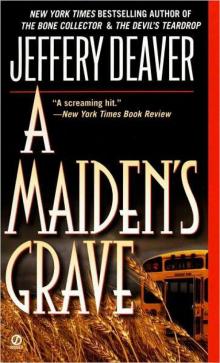 A Maiden's Grave
A Maiden's Grave Trouble in Mind: The Collected Stories - 3
Trouble in Mind: The Collected Stories - 3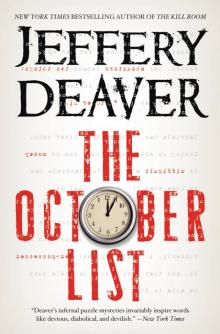 The October List
The October List The Deliveryman
The Deliveryman Garden of Beasts
Garden of Beasts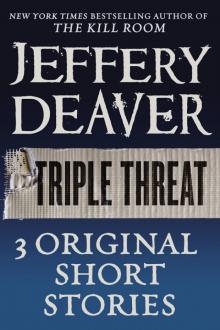 Triple Threat
Triple Threat The Broken Window
The Broken Window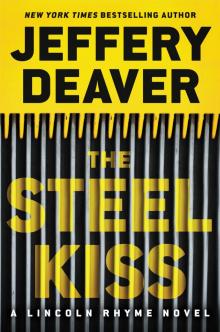 The Steel Kiss
The Steel Kiss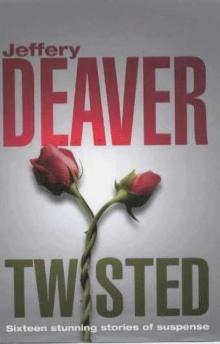 Twisted: The Collected Stories - 1
Twisted: The Collected Stories - 1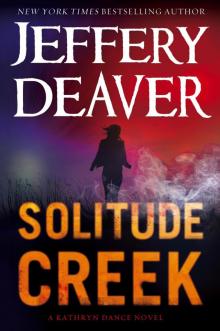 Solitude Creek
Solitude Creek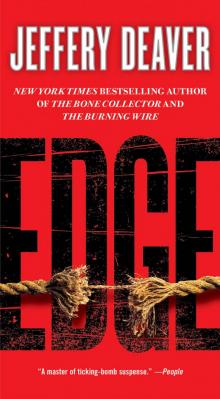 Edge
Edge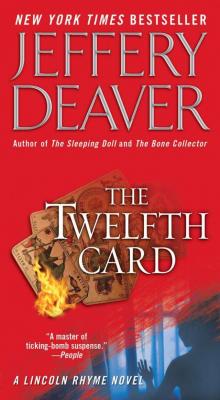 The Twelfth Card
The Twelfth Card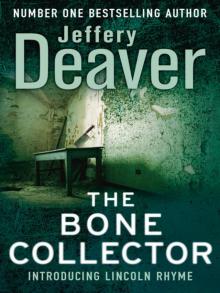 The Bone Collector
The Bone Collector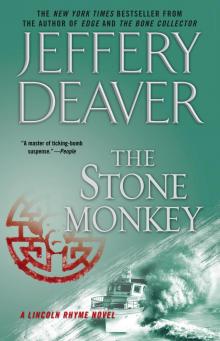 The Stone Monkey
The Stone Monkey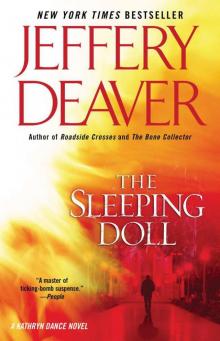 The Sleeping Doll
The Sleeping Doll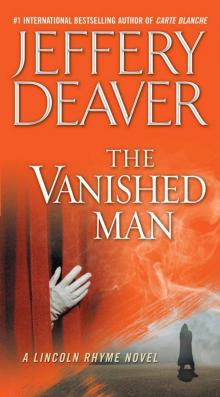 The Vanished Man
The Vanished Man The Kill Room
The Kill Room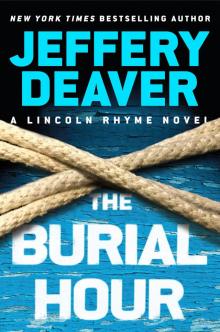 The Burial Hour
The Burial Hour An Acceptable Sacrifice
An Acceptable Sacrifice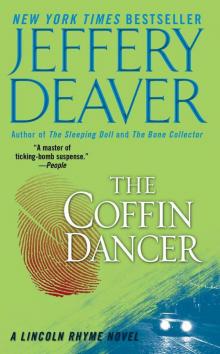 The Coffin Dancer
The Coffin Dancer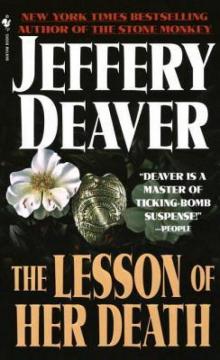 The Lesson of Her Death
The Lesson of Her Death The Empty Chair
The Empty Chair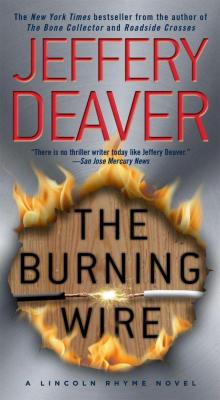 The Burning Wire
The Burning Wire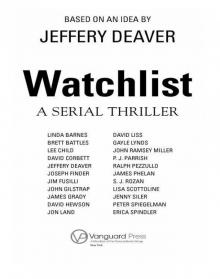 Watchlist
Watchlist Captivated
Captivated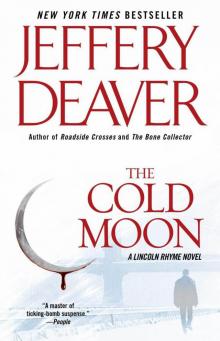 The Cold Moon
The Cold Moon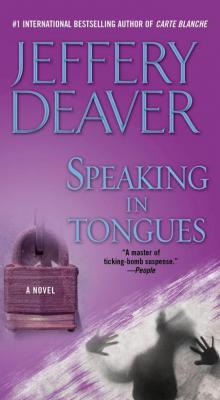 Speaking in Tongues
Speaking in Tongues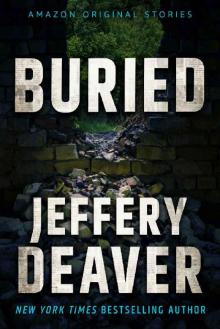 Buried (Hush collection)
Buried (Hush collection)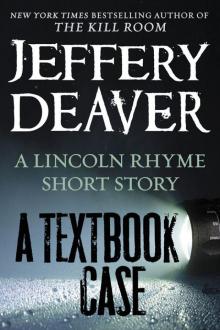 A Textbook Case
A Textbook Case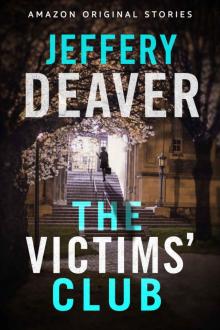 The Victims' Club
The Victims' Club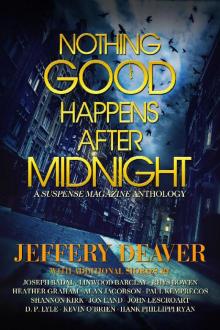 Nothing Good Happens After Midnight: A Suspense Magazine Anthology
Nothing Good Happens After Midnight: A Suspense Magazine Anthology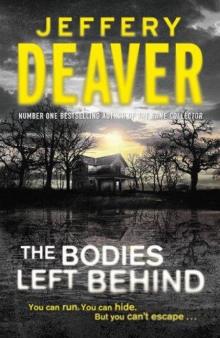 The Bodies Left Behind
The Bodies Left Behind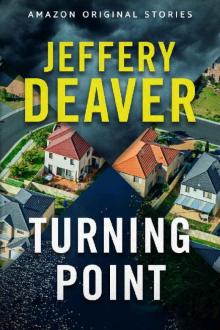 Turning Point
Turning Point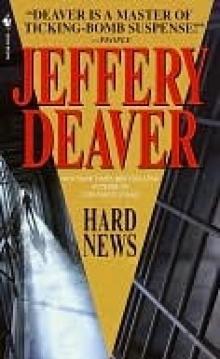 Hard News
Hard News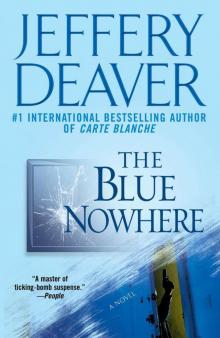 The Blue Nowhere
The Blue Nowhere The Second Hostage
The Second Hostage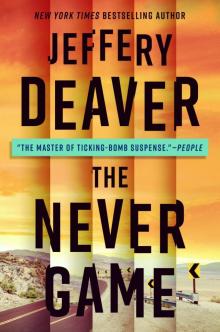 The Never Game
The Never Game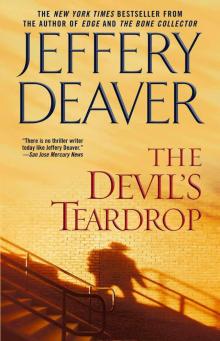 The Devil's Teardrop
The Devil's Teardrop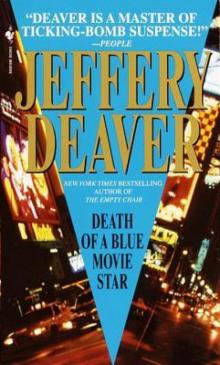 Death of a Blue Movie Star
Death of a Blue Movie Star The Skin Collector
The Skin Collector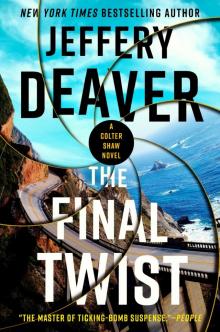 The Final Twist
The Final Twist Surprise Ending
Surprise Ending Twisted: The Collected Stories
Twisted: The Collected Stories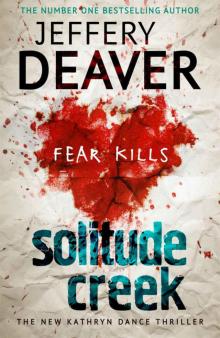 Solitude Creek: Kathryn Dance Book 4
Solitude Creek: Kathryn Dance Book 4 Twisted: The Collected Short Stories of Jeffery Deaver
Twisted: The Collected Short Stories of Jeffery Deaver Rhymes With Prey
Rhymes With Prey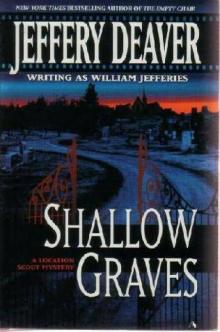 Shallow Graves
Shallow Graves Bloody River Blues
Bloody River Blues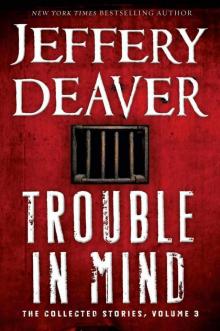 Trouble in Mind: The Collected Stories, Volume 3
Trouble in Mind: The Collected Stories, Volume 3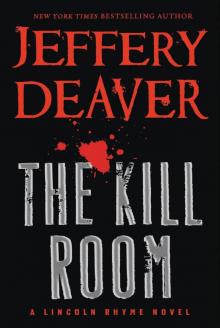 Lincoln Rhyme 10 - The Kill Room
Lincoln Rhyme 10 - The Kill Room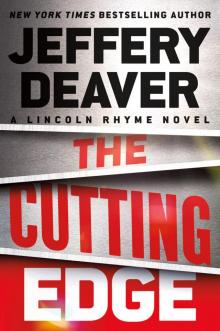 The Cutting Edge
The Cutting Edge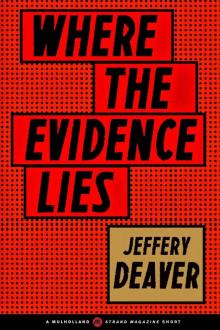 Where the Evidence Lies
Where the Evidence Lies Hell's Kitchen
Hell's Kitchen Twisted
Twisted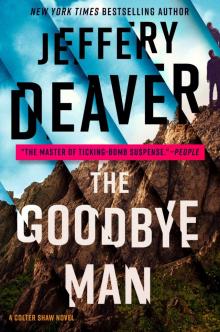 The Goodbye Man
The Goodbye Man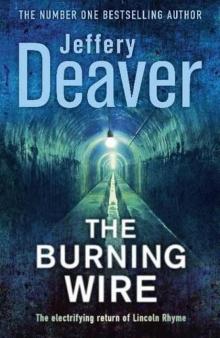 The burning wire lr-9
The burning wire lr-9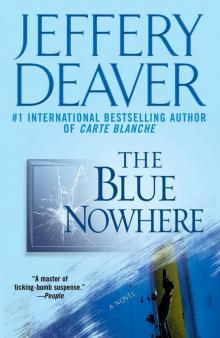 The Blue Nowhere: A Novel
The Blue Nowhere: A Novel Roadside Crosses: A Kathryn Dance Novel
Roadside Crosses: A Kathryn Dance Novel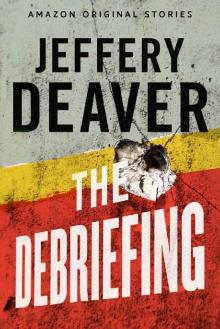 The Debriefing
The Debriefing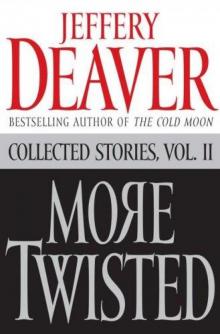 More Twisted: Collected Stories, Vol. II
More Twisted: Collected Stories, Vol. II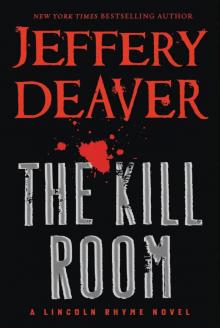 The Kill Room lr-10
The Kill Room lr-10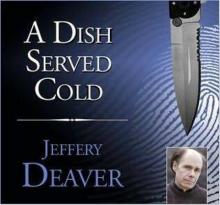 A Dish Served Cold
A Dish Served Cold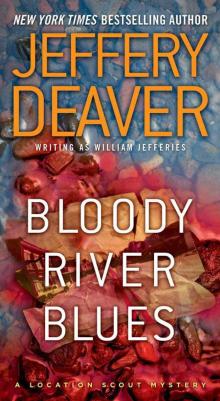 Bloody River Blues: A Location Scout Mystery
Bloody River Blues: A Location Scout Mystery The Bodies Left Behind: A Novel
The Bodies Left Behind: A Novel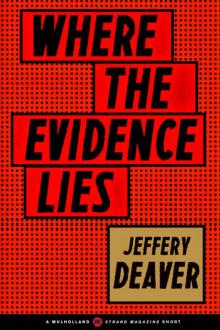 Where the Evidence Lies (A Mulholland / Strand Magazine Short)
Where the Evidence Lies (A Mulholland / Strand Magazine Short)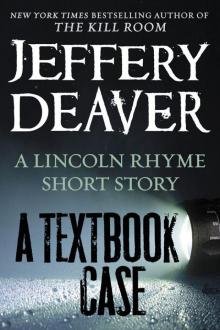 A Textbook Case (lincoln rhyme)
A Textbook Case (lincoln rhyme) Copycat
Copycat The Chopin Manuscript: A Serial Thriller
The Chopin Manuscript: A Serial Thriller Carte Blanche
Carte Blanche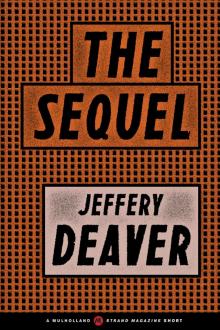 The Sequel
The Sequel